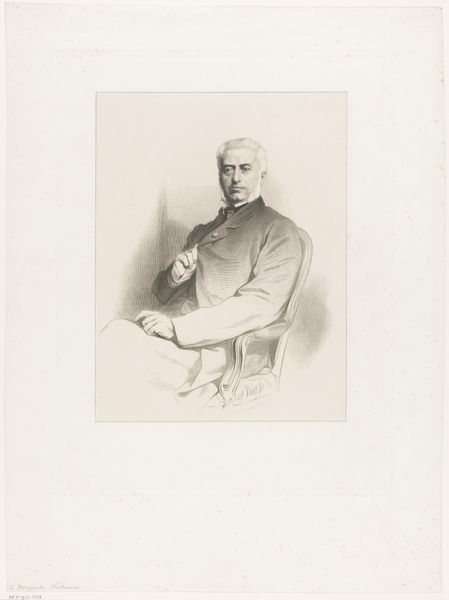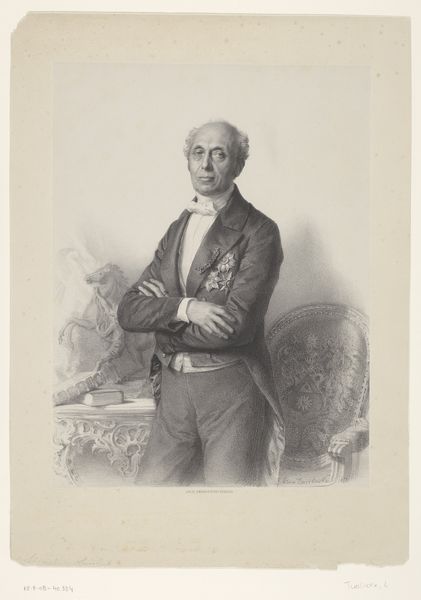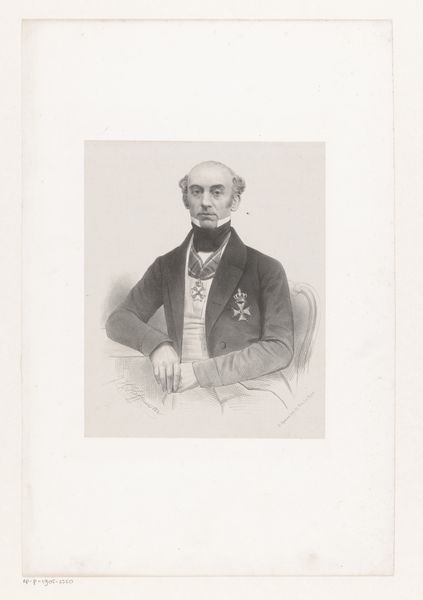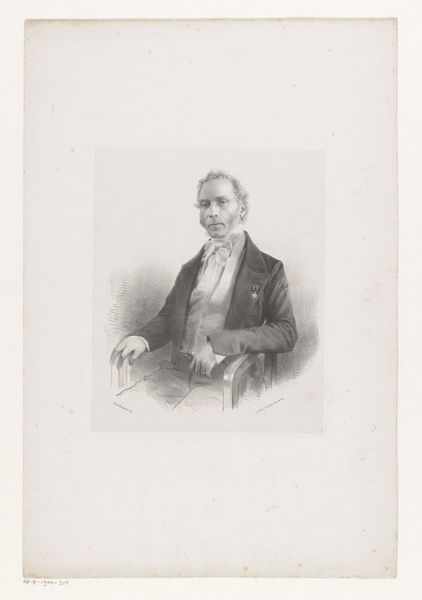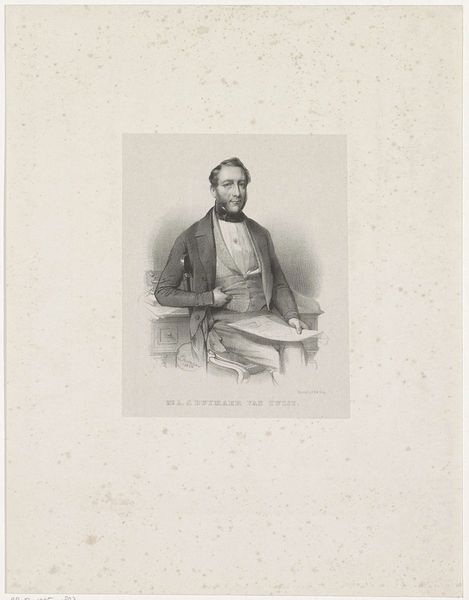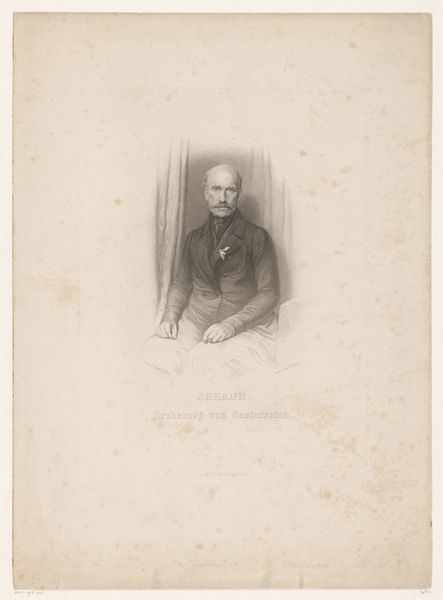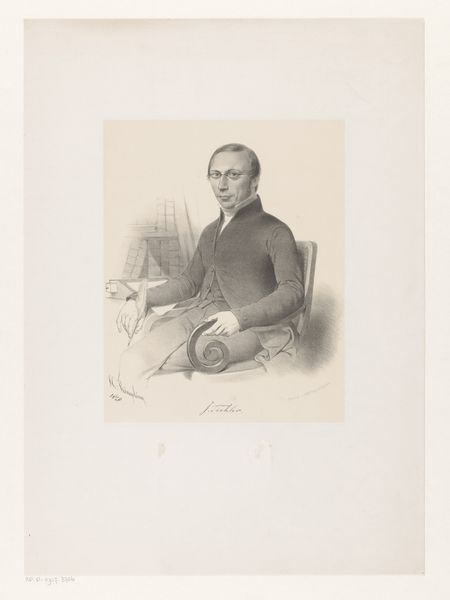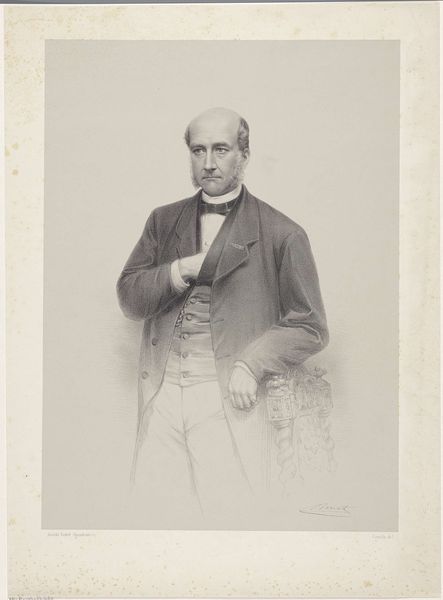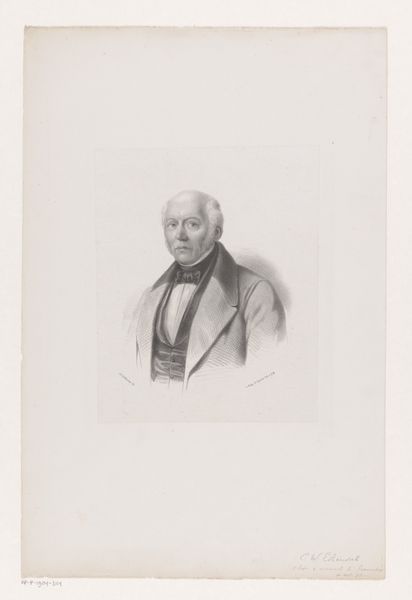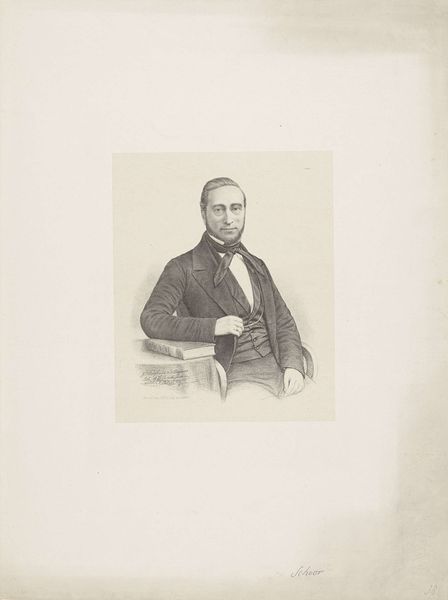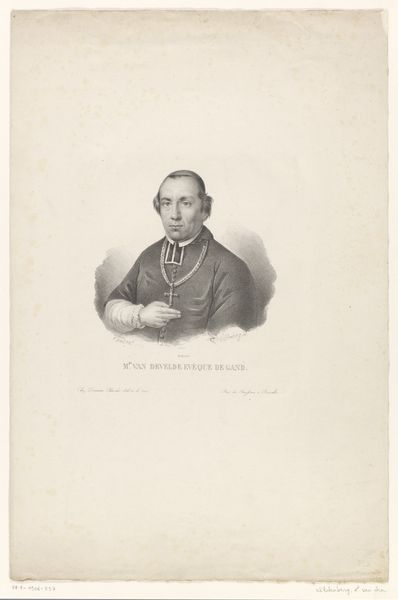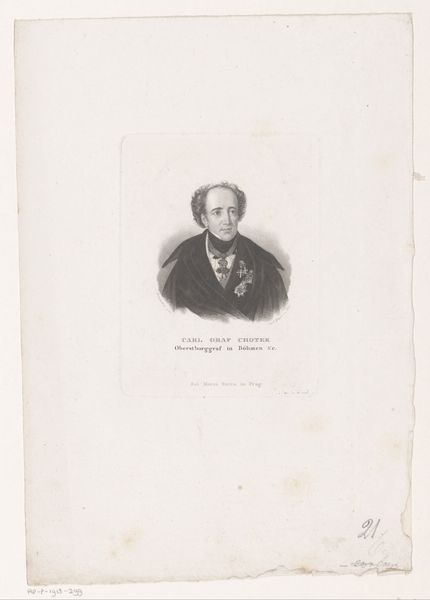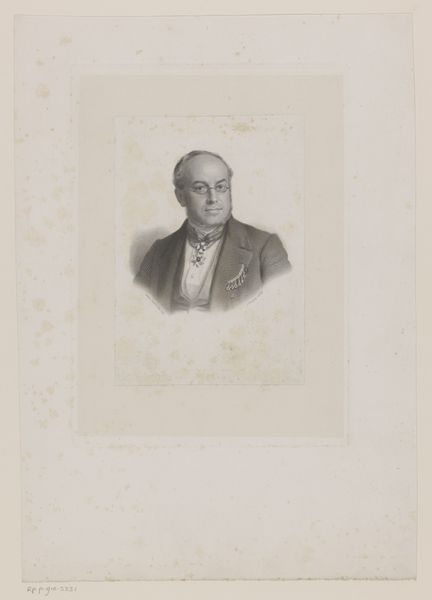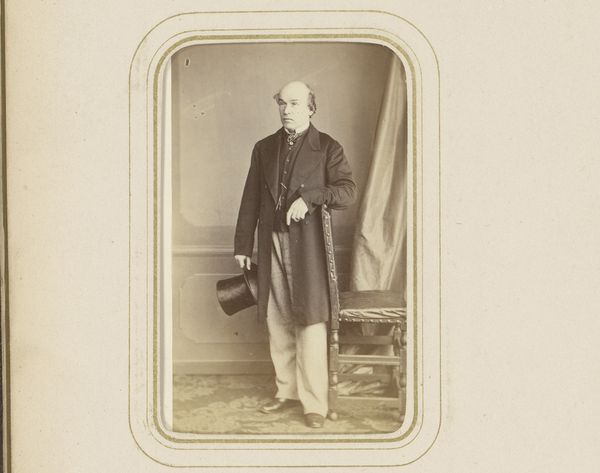
Portret van Eduardus Josephus Hubertus Borret 1863 - 1867
0:00
0:00
paper, graphite, engraving
#
portrait
#
pencil drawn
#
pencil sketch
#
paper
#
graphite
#
engraving
#
realism
Dimensions: height 555 mm, width 420 mm
Copyright: Rijks Museum: Open Domain
This is a lithograph portrait of Eduardus Josephus Hubertus Borret, made by Nicolaas Johannes Wilhelmus de Roode. The lithographic process involves drawing with a greasy crayon on a stone, which is then treated with acid. This allows ink to adhere only to the drawn areas, which are then printed onto paper. Note the subtle gradations of tone and fine lines, achieved through skillful manipulation of the crayon. The artist would have needed years of training to master the process, and it was still a relatively new technology at this time. Lithography’s rise coincided with the industrial revolution, providing a means of mass-producing images. This portrait reflects the increasing accessibility of image-making, even for those who weren’t royalty or the very wealthy. Consider the social and economic implications of this shift, as art and representation became more democratized through these new printing technologies. By considering the materials and the making, we see how technological innovation impacted the production, consumption, and democratization of images in the 19th century.
Comments
No comments
Be the first to comment and join the conversation on the ultimate creative platform.
